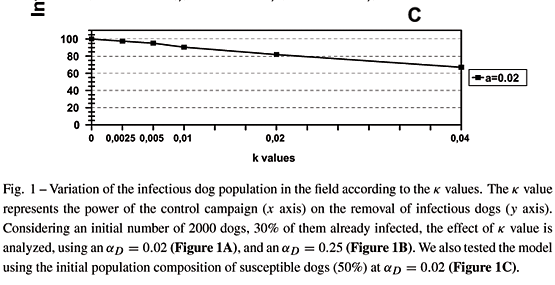The mathematical model described by Dye (1996) condemned the epidemiological canine visceral leishma-niasis control campaign, considering it non-efficient. Using this model, we mathematically demonstrate that the control is not efficient, only at low values (rate at which latent and infectious dogs are lost by the destruction program) which match the canine seropositivity observed in the field by the immunofluorescency (IF) blood eluates analysis. With higher k values, corresponding to IF (k = 0.07) or ELISA ( k = 0.25) results in sera samples, the number of infectious dogs declines to a Ro =1 or Ro =0, respectively, interrupting the transmission and the advancement of epidemics. We also experimentally demonstrate that the dog removal, following the results of IF of sera, instead of eluates lead to a 57% (p < 0.005) decrease in canine cases and 87.5% (p < 0.005) in human cases. Our mathematical and experimental results indicate that the control campaign become more efficient by enhancing the sensitivity of the diagnostic assay.
canine visceral leishmaniasis; epidemiological control; immunofluorescent assay









